Stories > Restoring A Cultural Gem
Restoring A Cultural Gem
Singaporeans Rinkoo Bhowmik and Jackie Lai’s cultural conservation initiative leads to designing shop-homes for street dwellers in Kolkata’s Chinatown.
BY SHWETA PARIDA
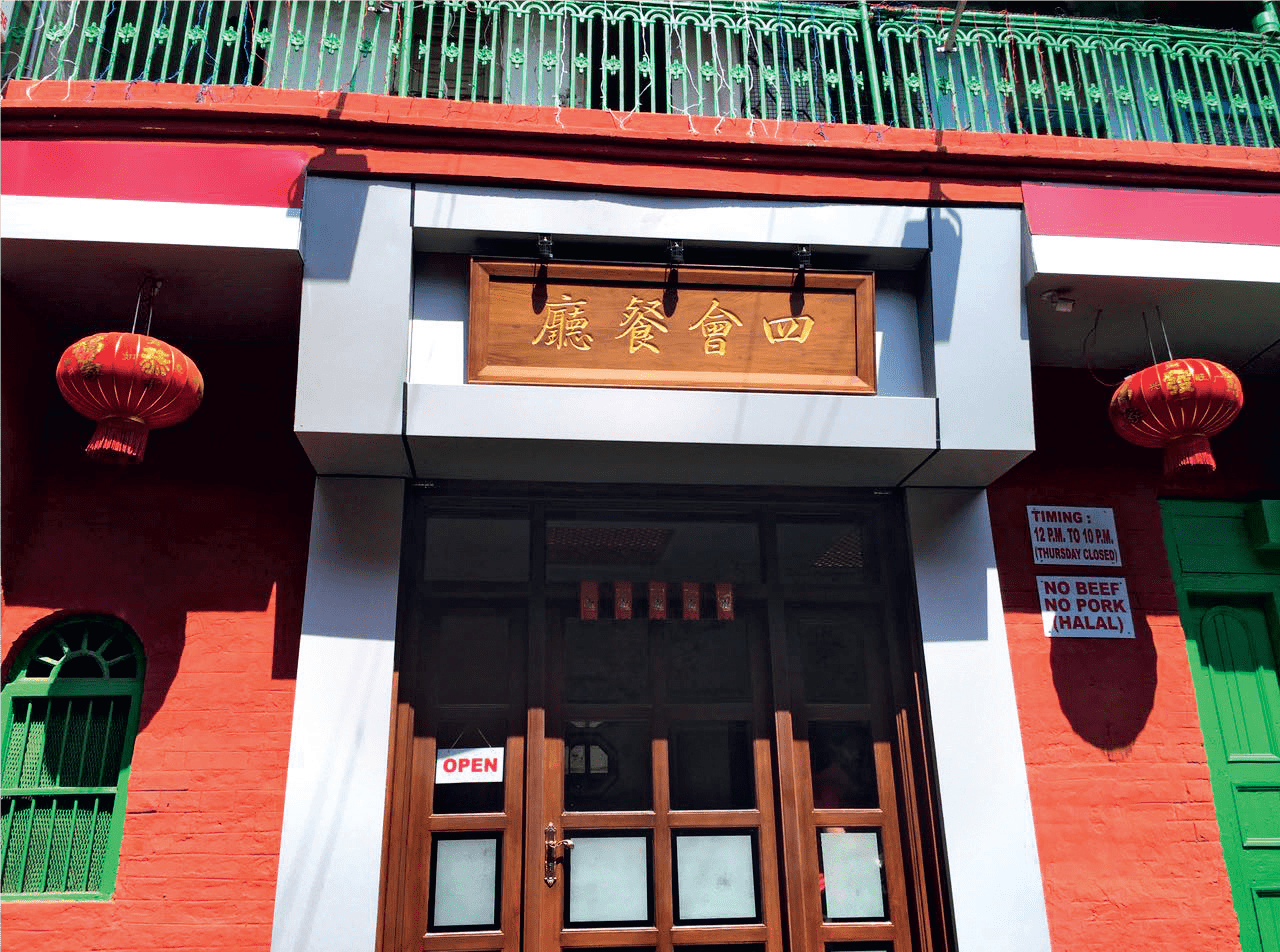
A former hostel for 19th century Chinese immigrants has been converted into the Sei Vui restaurant, whose restoration was paid for by fourthgeneration Kolkata resident Chen Yao Hua.
hen Singaporean Rinkoo Bhowmik, a former journalist-turned-urban thinker, fell in love with the historic Chinatown neighbourhood in the eastern Indian city of Kolkata during one of her visits, she was determined to do something about the precinct that had seen better days.
During the 19th century, the city saw the arrival of Chinese workers, mainly from the provinces of Hubei and Guangzhou. Bhowmik shares that these were mainly sailors and indentured labourers fleeing the opium wars in China.
“Many of them would work in Kolkata temporarily before setting sail further eastwards, such as to Malaya or presentday Singapore,” she explains. “Later, they started bringing their families and settled down here, and the first building that came up in the neighbourhood was a hostel which fell into disrepair. Thanks to a movement to save the local heritage, it was recently converted into a restaurant named Sei Vui, funded by the family of Chen Yao Hua, a fourth-generation Chinese resident of Kolkata.”
“MOST OF THESE HOMELESS PEOPLE WORK AS RAGPICKERS THAT ARE CRUCIAL TO THE CITY’S RECYCLING INDUSTRY. IF YOU RELOCATE THEM TO THE OUTSKIRTS, THEY WOULD NOT BE ABLE TO COMMUTE TO THE CITY DAILY, WHICH WOULD CREATE A NEW SET OF ECONOMIC PROBLEMS,” SAYS RINKOO BHOWMIK.
It is to preserve this vanishing heritage that in 2013, Bhowmik was compelled to launch the Cha Project, an acronym for Cities, Heritage and Architecture – an urban revitalisation collective comprising architects, engineers, artists, academics, entrepreneurs, heritage enthusiasts and community leaders based in Singapore and India. Its aim is to contribute towards creating equitable, just, liveable and people-centric city spaces by working closely with the local civic authorities. For the Cheenapara (Chinatown for Bengali) project, Bhowmik and her team collaborated with the Kolkata chapter of the non-profit heritage conservation organisation called the Indian National Trust for Art and Cultural Heritage.
With the help of local cultural enthusiasts, Bhowmik started organising heritage walks in Cheenapara for members of the public. Pratiti Nath, a local blogger, appreciates Bhowmik’s initiative: “Here exists a world within a world. The richness of the Chinese community’s culture and their warmth made the visit truly memorable. The heritage walk provided insights into the traditions and customs that I would not have otherwise been acquainted with.”
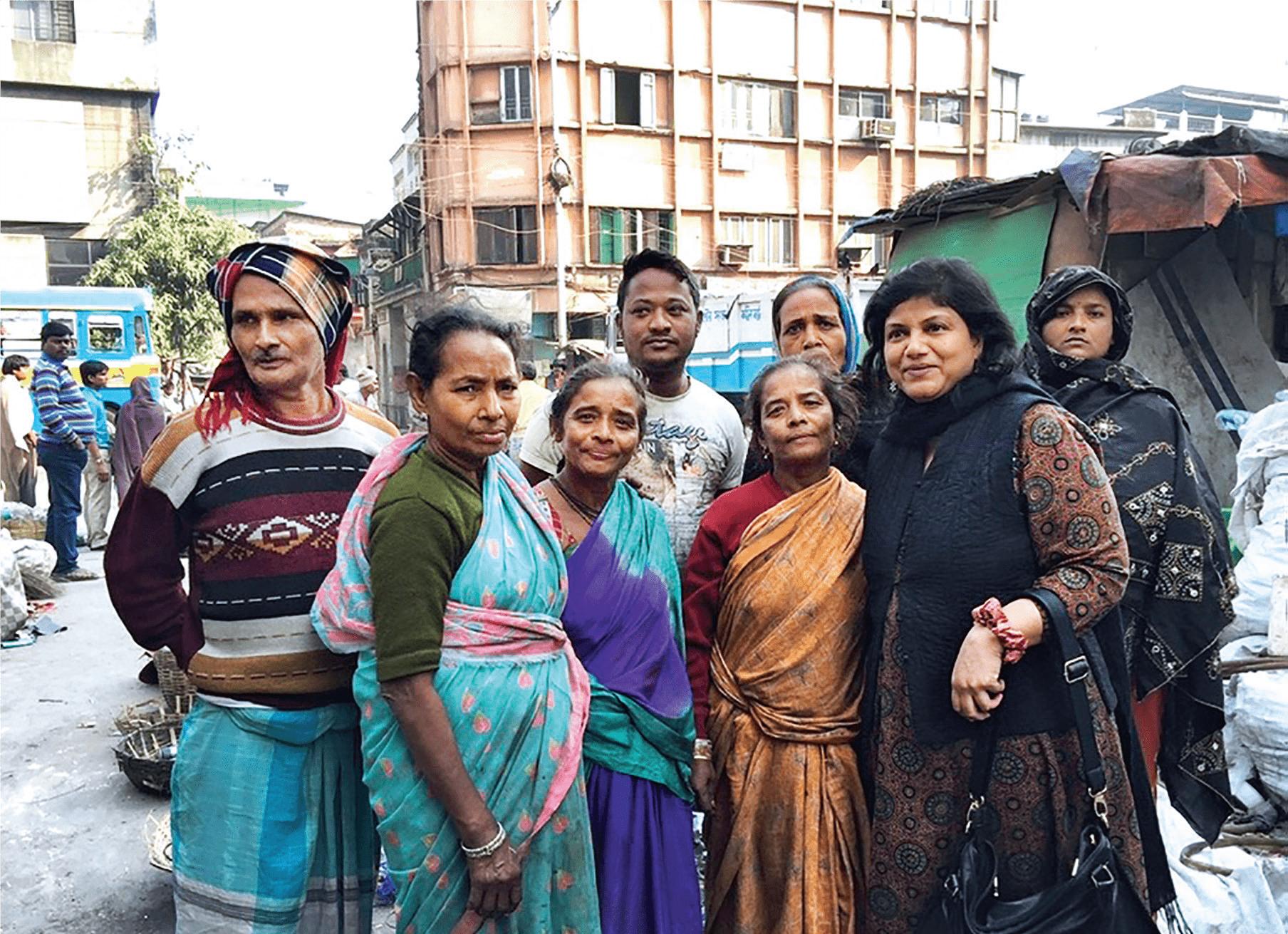
Singaporean Rinkoo Bhowmik (first row, far right), founder of the Cha Project, with the street dwellers of Kolkata’s Chinatown. She was clear that she did not want to displace the ragpickers due to her urban rejuvenation project in the precinct.
RECONCILING WITH THE PAST
Being one of the earliest commercial centres developed by the British East India Company in the early 19th century, the city acquired a cosmopolitan patina of its own over the years as distinct neighbourhoods housing different communities started taking shape. “There was a white town for the white settlers, black town for the natives and the grey town which was mainly for the Armenian, Portuguese, Anglo-Indian, French, Dutch and all the other communities including the Chinese,” shares Bhowmik.
“With each visit to the city, I discovered new aspects. For example, the Chinese immigrants brought their own specialist traders such as cordwainers, dentists, carpenters and became a mainstay of the city’s flourishing economy.”
Bhowmik believes that there is an invisible but intrinsic connection she reckons exists between Kolkata and Singapore – two port cities that have many parallels as trading outposts of the British East India Company.
Explaining the link between the two cities, she shares: “There was a time when the British carried out the administration of Singapore from Kolkata. Now, Singapore is in a position to extend a helping hand to a city that it shares a past with.
“Starting from the ‘60s and ‘70s, anything from the British colonial era in Kolkata was either sold to property developers or razed to the ground. The new but lacklustre buildings house offices, erasing much of the area’s more than 300-year-old history.”
Inspired by Singapore Chinatown’s now-defunct foodstreet in Smith Street, Bhowmik started envisioning a similar project for Kolkata’s Chinatown. While looking for a designer who could help her to do the renderings of the project, she met fellow Singaporean Jackie Lai, an awardwinning interior designer who did the initial renders for the Cha Project’s revitalisation plans for Kolkata’s Chinatown. “Once I realised the project’s impact, I wanted to be more deeply involved,” says Lai.
ONE THING LEADS TO ANOTHER
When the Cha Project team started discussing how to inject vitality into Cheenapara while keeping its heritage intact, they were faced with several challenges. The area was conspicuously strewn with garbage but the issue that was in plain sight yet did not occur to most people was human-centric. The challenge? What to do with the hundreds of street dwellers who live and work in the area.
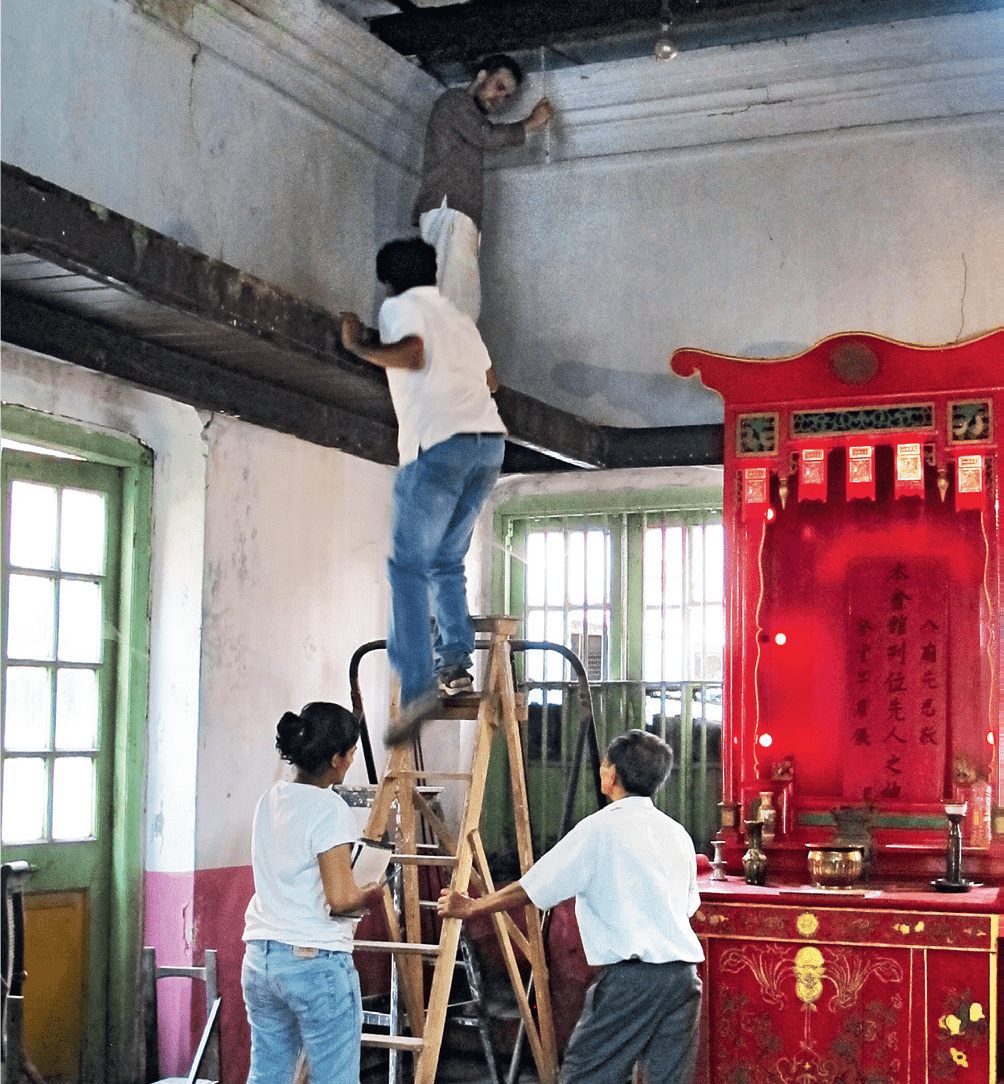
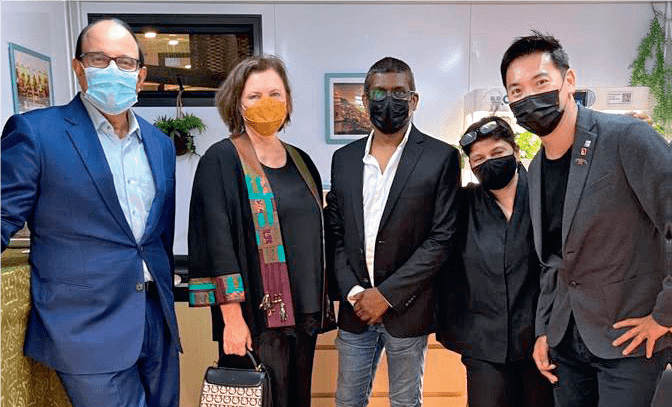
Spurred by the Cha Project rejuvenation scheme for Kolkata’s Chinatown, local architecture students helped to restore an old Chinese temple to its former glory in the east Indian city; Singapore Minister for Transport & Minister- in-charge of Trade Relations S Iswaran (far left) and his wife, Kay Mary Taylor, with Sam Vedanaigam, Bhowmik and Jackie Lai are seen at the Doonya pod prototype exhibition held at the National Design Centre, Singapore.
Bhowmik, Lai and the rest of the team were convinced that in their zeal to breathe new life into the precinct, they did not want to banish the poor street dwellers into obscurity. “It was our biggest predicament – we wanted to create an aesthetically pleasing environment but it meant that we would have had to evict the street dwellers from there,” says Bhowmik. “Most of these homeless people work as ragpickers that are crucial to the city’s recycling industry. If they are relocated to the outskirts, they would not be able to commute to the city, which would create a new set of economic problems.”
Pondering over this quandary, Bhowmik and Lai decided to tackle it step by step. First, they worked closely with the Kolkata Municipal Corporation to install a garbage compactor in the area. Second, they proposed a possible solution – a temporary shop-home structure that can be self-assembled within a day for the homeless residents of Chinatown.
“Singapore’s building industry has been using the prefabricated technology since 2014 as it is more environment-friendly and cost-effective. We thought of using this technology to recreate Singapore’s shophouse concept in Kolkata,” says Lai.
Bhowmik saw the conditions in which the street dwellers lived without any shelter from heavy rains during the annual monsoon season, so she became obsessed with the idea of the temporary shop-home.
A ROOF OVER THEIR HEADS
That is how Doonya, a Singapore-based social enterprise, was born. Its team includes, besides Bhowmik and Lai, Sam Vedanaigam, whose patented pod structures form the backbone of the mobile homes. Architecture and sustainable development strategists from the Singapore University of Technology and Design (SUTD) and Nanyang Technological University (NTU) also play an important role in the project.
Vedanaigam, who is lending his patented technology to the project, has helped to create a prototype of the shop-home that features a shop unit on the ground floor and a kitchen, bathroom and living area on the first floor. The rooftop, an essential part of most Indian homes, will offer extra space to the residents for home-based economic activities such as drying spices to sell in the market. These units are also geotagged, which will provide the residents a recognisable address, allowing them to get access to banking services.
“As a designer, my goal is to help improve the lives of those that we are creating the spaces for,” says Lai. “The rationale of the revitalisation is to help boost the local economy through tourism and create a sustainable ecosystem for the neighbourhood’s residents.”
“As a designer, my goal is to help improve the lives of those that we are creating the spaces for.”
Jackie Lai, Singaporean interior designer
RESPONSIVE DESIGN
Having worked closely with the Chinese residents and civic authorities, Bhowmik says that the team was very clear about not making it a non-consultative project.
“We cannot undermine the dignity of the street dwellers by imposing our design on them without identifying their real needs,” she says. In response to this approach, Project SHEA, a sustainable development academic research unit from NTU, launched the Doonya Living Challenge for students from different disciplines, including engineering, sociology, architecture and design in India.
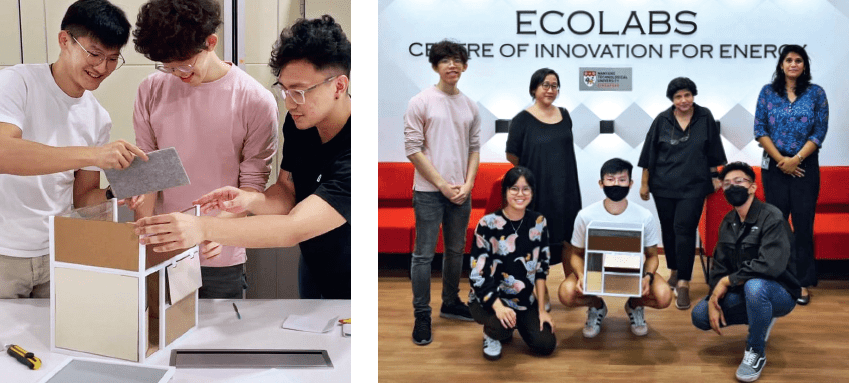
Students from SUTD created a shophome prototype for the street dwellers; Bhowmik with the NTU team that is working on sustainable solutions for the shop-home.
In the process, the team of NTU and SUTD students were amazed to learn how the school- and college-going youths from the slums coped with the lack of electricity. Many of them would finish their assignments and charge their phones and laptops in their learning institutes. Bhowmik shares that the youths in Singapore have never faced such challenges and the Kolkata project opened their eyes to issues plaguing communities with fewer resources. “They shared with me that working on the project was a big learning curve for them and they will never take their privilege for granted,” she says.
While the teams from NTU and SUTD are committed to making it a self-sustaining project through the use of solar panels and plumbing technology that can be incorporated into the temporary dwellings, Lai has designed the interior by keeping the users’ needs in mind. The Covid-19 pandemic halted the progress made thus far as the team was not able to travel to India for two years. During this time, Bhowmik facilitated virtual meetings between the SUTD students and the street dwellers to discuss the project.
“THE PROJECT BY THE SINGAPOREAN TEAM WILL CHANGE OUR LIVES FOR THE BETTER. EVEN LITTLE THINGS IN THE SHOP-HOME, SUCH AS A POWER SOURCE TO CHARGE MY PHONE SO THAT I CAN LISTEN TO MUSIC, WILL BRING ME MUCH JOY,” SAYS STREET DWELLER SHAQEEL.
Shaqeel, one of the street dwellers who will benefit when the project comes to fruition, is palpably excited and thankful: “The project by the Singaporean team will change our lives for the better. Even little things in the shop-home, such as a power source to charge my phone so that I can listen to music, will bring me much joy.”
Meanwhile, the original restoration undertaking that led to the temporary dwelling projects in Cheenapara has helped to unify the city’s dwindling Chinese community – from a population of 70,000 at its peak in the 1900s, the figure now stands at just 2,500 – amid renewed hopes.
Dominic Lee, a member of the city’s Chinese community, expresses his gratitude to Bhowmik and the Singapore team for restoring the past glory of Kolkata’s Chinatown. “Many Chinese, who left the country to settle overseas, tell me that once this conservation project materialises, they will come back to the city,” he enthuses.
